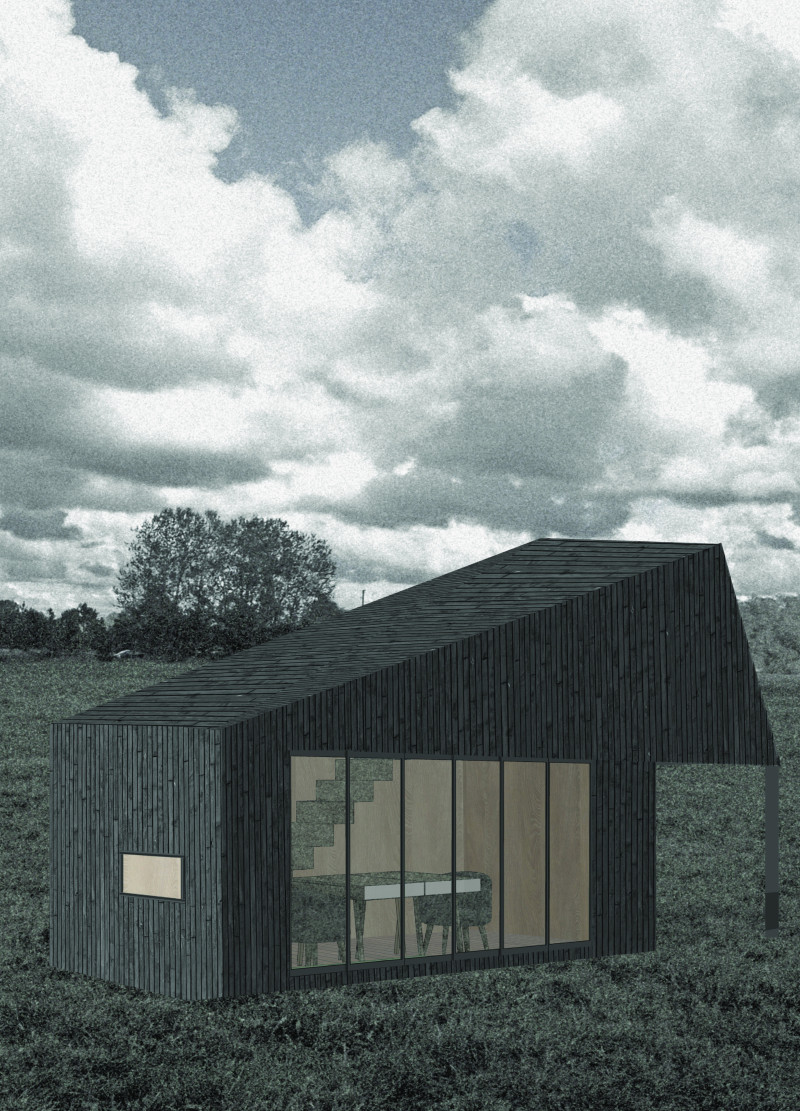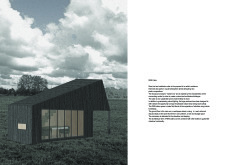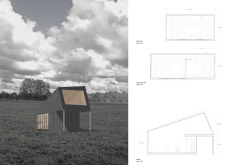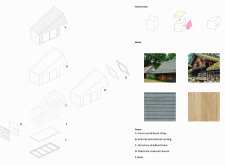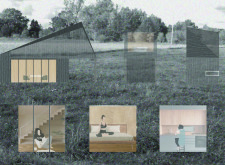5 key facts about this project
The REM Cabin, known as the "Read, Eat and Meditation Cabin," serves as an artist’s residence designed for two poets. Set within a calm and quiet environment, it aims to create a space that encourages creativity and new poetry. The concept is framed as a "modern hut," taking cues from the natural surroundings to create a connection between the structure and the landscape around it.
Spatial Organization
The cabin is organized to facilitate a smooth flow between different activities. The ground floor functions as the primary workspace, where reading, writing, and discussions take place. It includes essential features like a kitchen, a sink, and storage, all integrated thoughtfully into the layout for easy access and convenience.
Materials and Construction
Constructed entirely of wood, the cabin emphasizes eco-sustainability. Using wood contributes to the natural feel of the space while also being environmentally friendly. Large windows are an essential design element, bringing in plenty of natural light and offering views of the surrounding area. This connection to nature enriches the overall ambiance of the cabin.
Design Features
The interior spaces are designed to support both private reflection and shared experiences. A mezzanine level is designated for relaxation, creating a cozy retreat above the main floor. The separation of spaces through furnishings helps maintain a balance. Occupants can work alone or come together as needed.
Adaptability
The form of the REM Cabin allows for flexibility in its use. It can be combined with other units, making it suitable for various configurations. This adaptability not only meets the needs of its occupants but also respects and complements the natural setting, ensuring that both architecture and environment coexist harmoniously.
Large windows enhance the inviting atmosphere, allowing for ample light while framing the beauty of nature outside, creating an inspiring backdrop for creativity.


